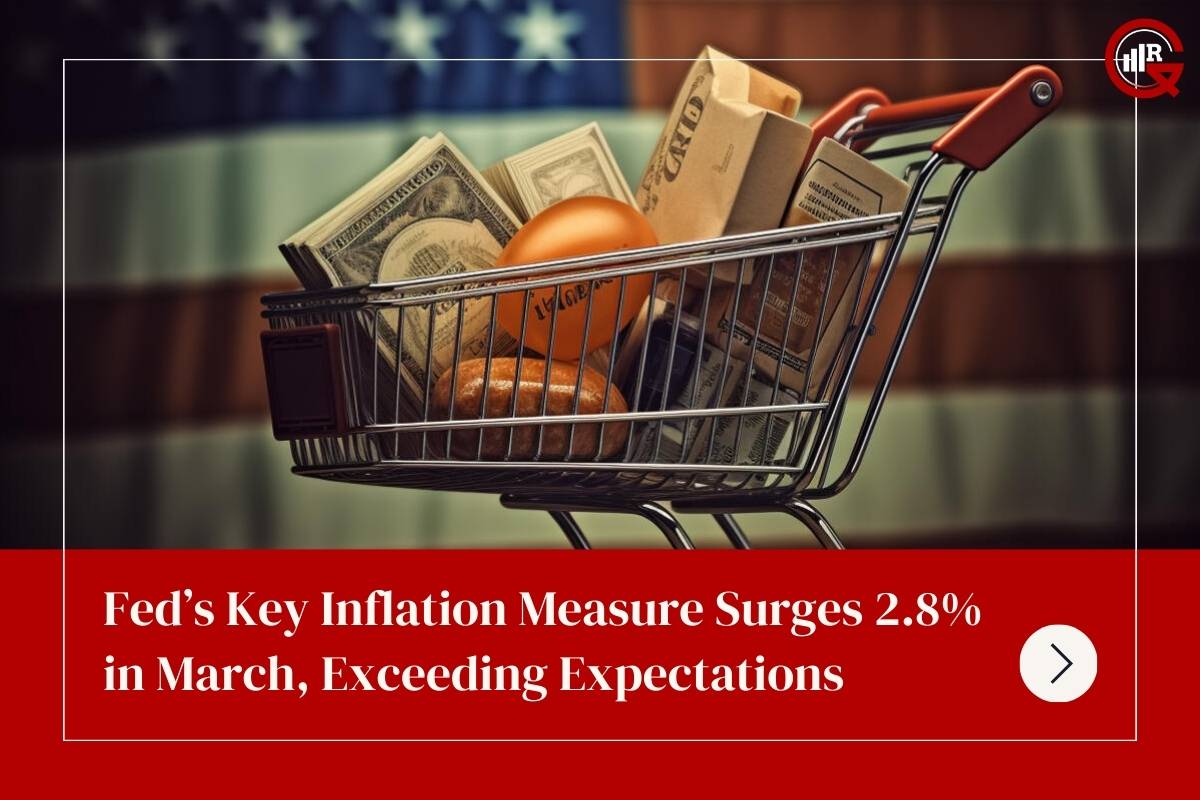(Source – FX Empire)
In March, inflation maintained its upward trajectory, with a pivotal indicator closely monitored by the Federal Reserve indicating persistent price pressures.
The Commerce Department’s report on Friday revealed that the personal consumption expenditures (PCE) price index, excluding food and energy, surged by 2.8% compared to the previous year. This figure remained consistent with February’s reading, surpassing the Dow Jones consensus estimate of 2.7%.
All-Items PCE Price Gauge
When including food and energy, the all-items PCE price gauge registered a 2.7% increase, slightly higher than the estimated 2.6%.
Despite the inflationary data, market response remained subdued, with Wall Street anticipating an upward opening. Treasury yields experienced a decline, with the benchmark 10-year note standing at 4.67%, marking a decrease of approximately 0.4 percentage points during the session. Futures traders, however, exhibited a slightly more optimistic outlook, elevating the probability of two potential rate cuts this year to 44%, according to the CME Group’s FedWatch gauge.
Consumer Spending and Income
Amidst elevated price levels, consumer spending demonstrated resilience, climbing by 0.8% for the month, slightly surpassing the estimated 0.7%. Personal income also witnessed a rise of 0.5%, aligning with expectations and outpacing February’s 0.3% increase.
However, the report indicated a decline in the personal saving rate to 3.2%, reflecting a decrease of 0.4 percentage points from February and a notable decline of 2 full percentage points from the previous year. This decline suggests that households tapped into their savings to sustain spending levels.
Implications for Monetary Policy
The latest inflation data, coupled with Thursday’s concerning figures, is likely to influence the Federal Reserve’s monetary policy stance. With PCE accelerating at a 3.4% annualized rate in the first quarter, well above GDP growth expectations, the Fed is expected to maintain its current interest rate trajectory at least through the summer unless there is a significant shift in economic data.
Fed’s Inflation Target
The Federal Reserve targets a 2% inflation rate, a threshold that the core PCE measure has surpassed for the past three years. The Fed closely monitors the PCE due to its adjustment for changes in consumer behavior and its emphasis on excluding volatile components such as food and energy prices.
The report highlighted a notable divergence in price trends between services and goods. Services prices increased by 0.4% on the month, while goods experienced a modest uptick of 0.1%. This shift reflects a reversal from earlier pandemic-induced trends, where goods inflation dominated. Food prices exhibited a marginal decline of 0.1%, while energy prices rose by 1.2%.
On a 12-month basis, services prices surged by 4%, contrasting with the minimal movement in goods prices, which increased by just 0.1%. Food prices recorded a 1.5% increase, while energy prices saw a gain of 2.6%.
As inflation persists, the Federal Reserve continues to navigate the complex economic landscape, closely monitoring data trends to inform its policy decisions.






